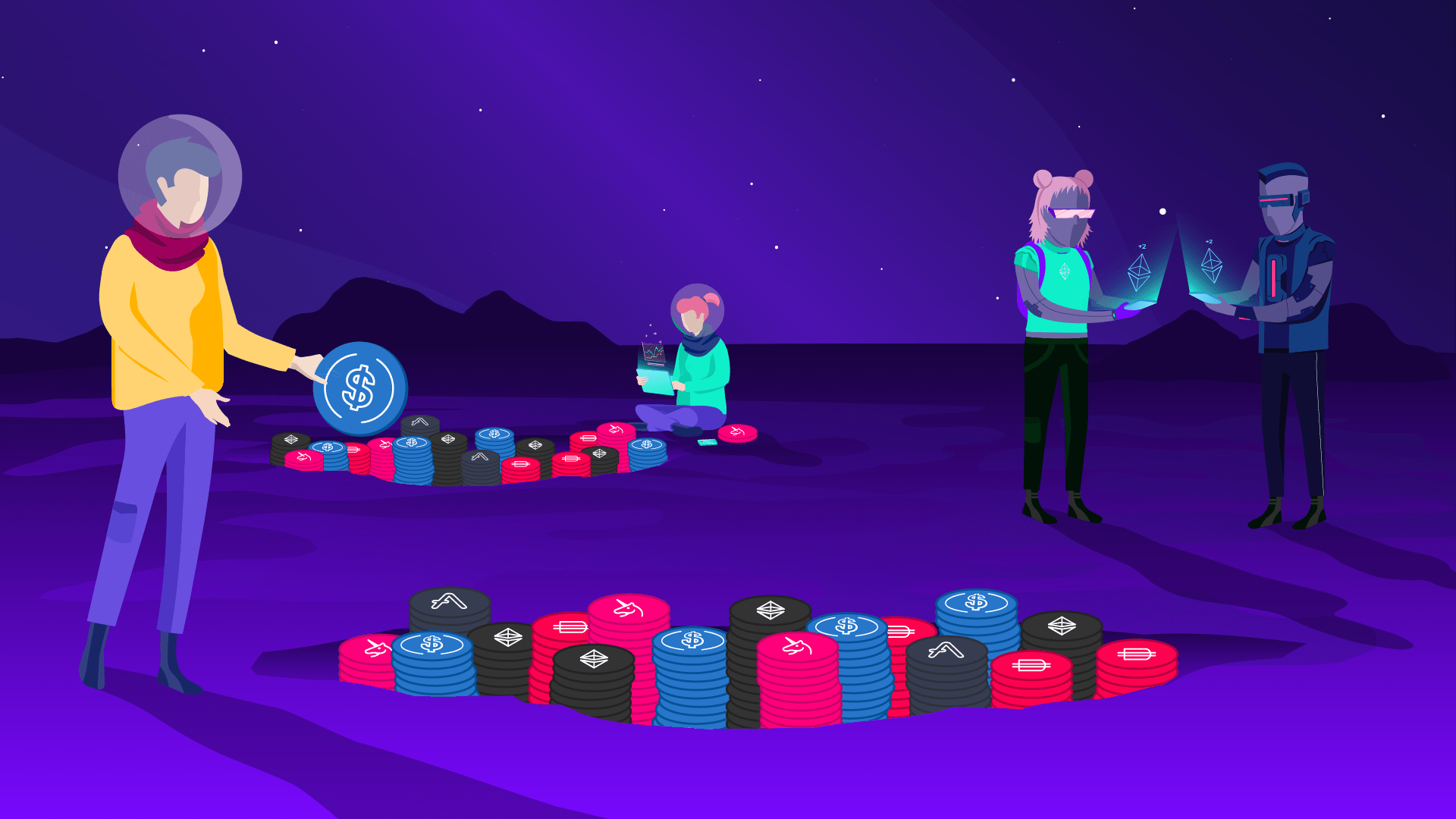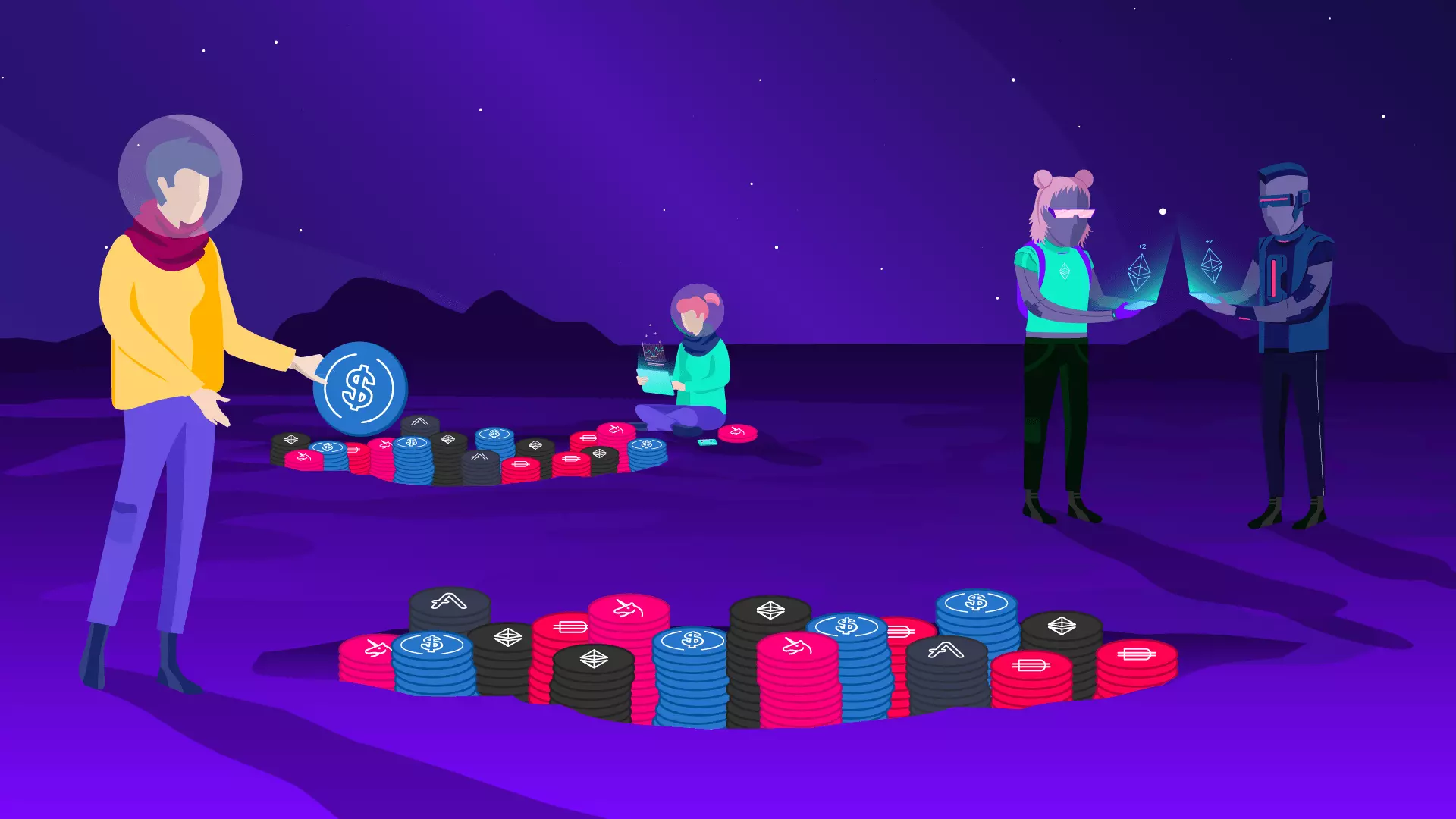Decentralized vs traditional finance. Improvements in privacy, transparency and forecasting. Basic concepts: swap, liquidity, staking, lending/borrowing.

.webp)
DeFi is like a power plant that powers the entire crypto ecosystem, from token swaps to NFT gaming.
How decentralized finance works
Just like in regular finance, with DeFi you can “deposit” crypto to generate a return, or “borrow” tokens. All without needing intermediaries such as banks, financial institutions or agents: the interaction is between users and these decentralized platforms, which often lowers costs and reduces operating times.
An emblematic example of what can be done in DeFi are decentralized exchanges like Uniswap, also known as dexes, which allow tokens to be exchanged automatically, on the blockchain and without the need for intermediaries or giving up control of the cryptoassets. Transactions are simple, and occur in simple and friendly interfaces. However, behind it run smart contracts and security protocols that protect and secure operations.
The different DeFi services take possibilities from traditional finance but do not implement them privately but rather leaving an anonymous, although public, record in the base blockchain of that protocol. Therefore, everything that happens is clearly verifiable without compromising anyone’s identity or privacy.
Y esto ocurre sin otro intermediario más que un smart contract que permite automatizar el swap o intercambio de tokens, los depósitos de seguridad conocidos como staking, el aporte de liquidez para lending o la toma de préstamos o borrowing.
DeFi Benefits
The dubious “advantages” of traditional banking. How to get returns with cryptocurrencies. Markets that never close. The independence of the DeFi ecosystem.
When someone has money in a bank account, they can access it at any time. But you can also tie it up in a fixed term, a type of deposit that allows you to receive interest.
In that case, banks use that deposited money to provide it in personal loans to other clients, or even to companies. And they charge an interest rate to the clients of those loans. However, only part of that difference is passed on to savers in fixed terms.
The traditional system presents this interest as a “prize” or “benefit” for the client, but in reality the return obtained from deposits is nothing more than a discounted part of the commission that the bank earns by lending our money to other people. .
Unlike that centralized model, DeFi lending protocols (like AAVE) allow you to earn a return on cryptocurrencies without losing control or ownership of those funds. In fact, you can deposit them in pools and withdraw them whenever you want or need, charging what you have earned as commission or interest up to that moment.
Many play-to-earn video games even have their own staking systems, which ensure the stability and capitalization of the project, to continue growing in the NFT gaming ecosystem. Axie Infinity, for example, allows staking of AXS, its governance token.

The differences with traditional finance are structural: DeFi works like banking between people.
Advantages of decentralized finance
They allow you to take loans, exchange tokens and generate income with crypto in a secure, private and transparent way.
Since everything works on blockchain smart contracts, there is no need to hand over control of the assets to any institution, bank or financial agent.
By eliminating intermediaries, it is very possible to obtain a higher return than the regular financial system and often pay lower commissions or costs.
Smart contracts ensure that agreements are predictable and inviolable.
In crypto, and especially in the case of dexes, markets never close.
Commissions, returns and the proper functioning of the ecosystem are not affected by monetary or economic policies of any state; nor are they tied to the cycles of the traditional financial system.
Top DeFi Tools and Operations
January 15, 2022The role of decentralized exchanges and lending protocols. The possibilities offered by staking, lending/borrowing and yield farming.


Taking crypto loans, making token deposits for yield, trading: DeFi opens many doors.
Yield farming“Yield farming” is another form of passive DeFi investing that relies on liquidity pools. Users trade different tokens or cryptocurrencies without the need for an exchange or order book, and each operation generates a commission charged by those who provide liquidity to the pool of cryptocurrencies that are traded.
This payment is often made with the governance token of the protocol itself, which can be reinvested in another liquidity pool or in staking, so that what is obtained from yield farming is “replanted” to achieve compound returns .
Staking
This particular type of deposit is about keeping your assets in your wallet, “locked” by the smart contract of a DeFi project, a decentralized exchange, or even a play-to-earn video game like Axie Infinity.
This helps these projects maintain their market capitalization and secure their network. In exchange, they offer a return that allows you to increase the amount of crypto, which can then be re-deposited in a similar way to collecting interest on a fixed term and adding it to the deposit.

